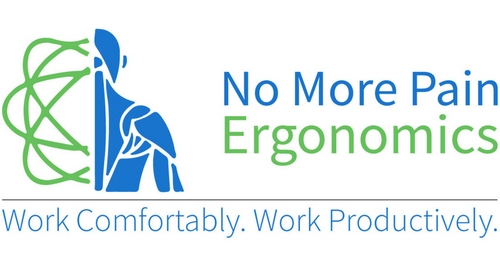-
Shop
- 🔥 Warehouse Clearance Sale 🔥
- Ergonomic Mice
- Ergonomic Keyboards
- Specialised Ergonomic Mice
- Standing Desks
- Ergonomic Chairs
- Laptop Stands & Risers
- Monitor Risers
- Computer Monitor Arms
- Footrests
- Wrist and Forearm Supports
- Back Supports
- Tablet Accessories
- Boardroom Chairs
- Headsets
- Other Ergonomic Equipment
- Online Ergonomic Training Courses
- New Products

- For Customers
- For Business Customers
- For Health Professionals
- About Us
- Reviews
- Product Recommendation Tool
SHOULDER PAIN
Ergonomic Considerations
What Is Shoulder Pain?
Shoulder Pain is one of the top 5 most reported ergonomic related issues in people with white collar job roles. Often gradual in onset, it can quickly develop into a constant aching and throbbing pain that worsens at the end of each day or the end of the week.
There are 2 main reasons that you may be experiencing shoulder pain. This article will explain each of these and provide you with the answer to how you can fix it.
What Causes Shoulder Pain?
Your Computer Mouse is Positioned Too Far Away from your Body
Traditional keyboards are too wide in size. They feature a numeric keypad on the right hand side which forces you to position your computer mouse away from your body. This causes our arm to adopt a slightly abducted working posture, in order to use our computer mouse. Unfortunately our arms weren't designed to hold this posture for extended periods each day, and so with repetitive exposure and use in this awkward posture, the muscles in our shoulder become fatigued and inflamed.
Your Workstation Lacks Arm Support
Due to the design of some workstations, they can lack sufficient arm support for the user. In this instance, the muscles in your shoulder and arm are more activated to support your arm. Again, with repetitive exposure and use, these muscles can become fatigued and inflamed.
A lack of arm support is common in workstations that are very small or if your computer chair lacks arm rests.
How Is Shoulder Pain Treated?
The solution lays in re-positioning your computer mouse in a way that allows your shoulder to be more relaxed and closer to your body. To achieve this, you may need to change your keyboard to an ergonomic compact keyboard. These keyboards are specifically designed to allow your computer mouse to be positioned close to your body. We recommend the Compact Mini Ergonomic Keyboard or the Ease Compact Keyboard (if you really need your numeric keypad but still want a compact keyboard).
Another solution is to introduce an external arm support. This might come in the form of adding arm rests to your computer chair or an external ergonomic arm support device. Providing your arm with something to rest on, will help to reduce the activation of the muscles in your shoulder and arm. This in turn will help to reduce the pain in your shoulder. We recommend the Ergonomic Arm Stand.
Ergonomic Keyboards
Your keyboard could also be aggravating your shoulder pain. Consider switching to a compact keyboard that is slim in its design and allows for the correct positioning of your computer mouse. This will help to reduce unneccesary overreaching for your computer mouse all day.
Ease Compact Keyboard
The Ease Compact Keyboard is thinner than a traditional keyboard but still contains the numeric keypad. It is ideal for users with shoulder pain who perform lots of numeric data entry each day. The compact design will allow you to reposition your computer mouse within easy reach.
Wireless Model
Low profile keys
Ideal for Shoulder Pain
Ergo Keyboard Combo
The Ergo Keyboard Combo is a compact ergonomic keyboard paired with a wireless numeric keypad. It is a great option for those with shoulder pain as you can remove the numeric keypad and bring your mouse in even closer. When you need to use the numeric keypad, simply add it back in. Even with the numeric keypad, this keyboard is still smaller than a traditional keyboard.
Wireless or Wired Models
Low profile keys
Ideal for Shoulder Pain
Arm Supports
An arm support will provide you with additional support for the muscles in your shoulder and upper arm. These often get over used or tight when your workstation lacks sufficient area for you to rest your arm. Consider adding one of the below options into your workstation setup.
Ergonomic Arm Stand Set
The Ergonomic Arm Stand Set is designed to provide users with a moveable forearm rest and ergonomically positioned mouse pad. The Ergonomic Arm Stand can support up to 11kgs of weight effectively relieving 90% of the weight undertaken by your wrists and shoulder.
Attaches to your Desk
3 Pivoting Joints
Height Adjustable
Ergonomic Arm Rest Arm
The Ergonomic Arm Rest Arm features two joints that are able to rotate with your arm movements, allowing your hand and arm to move freely but still feel supported.
Attaches to your Desk
2 Pivoting Joints
Ideal for Shoulder Pain







